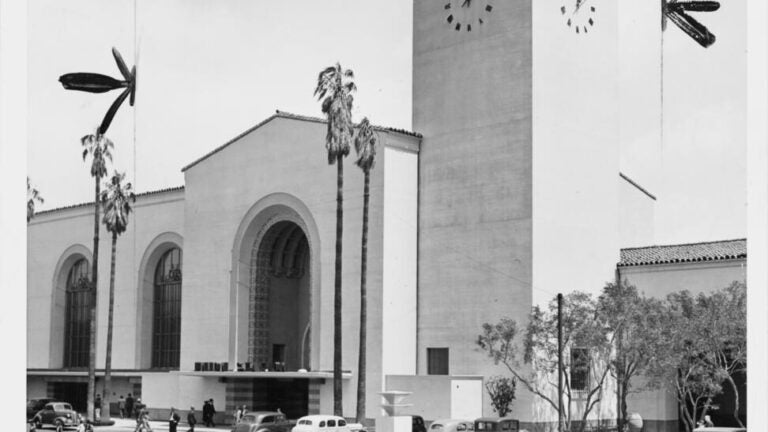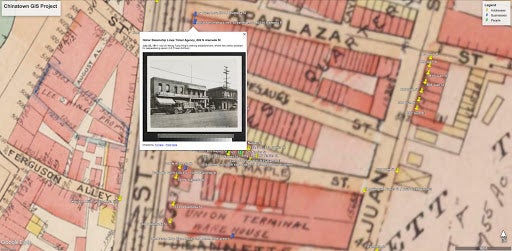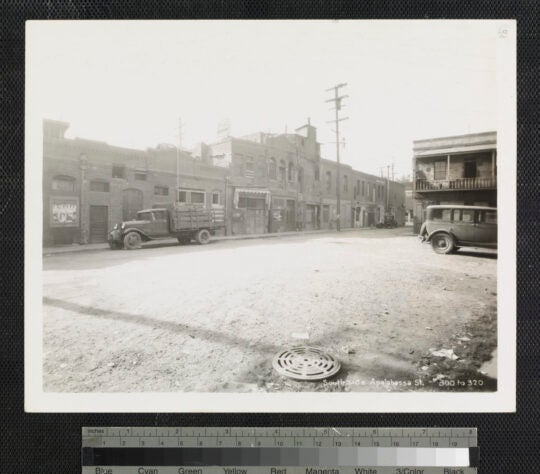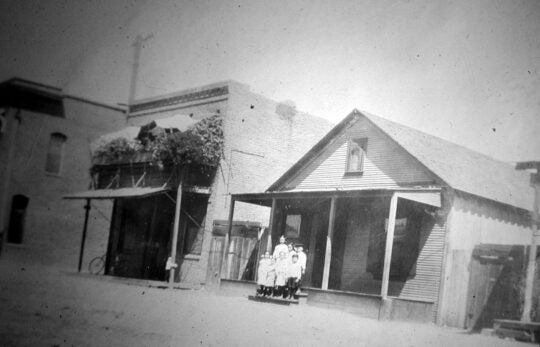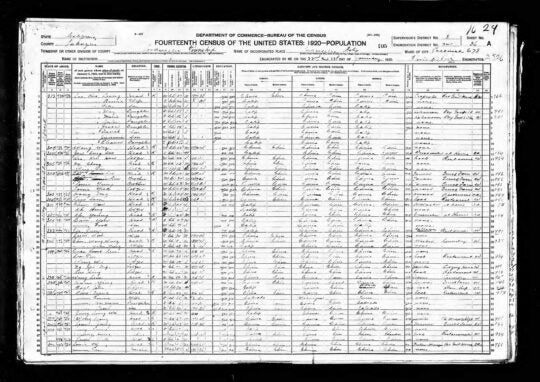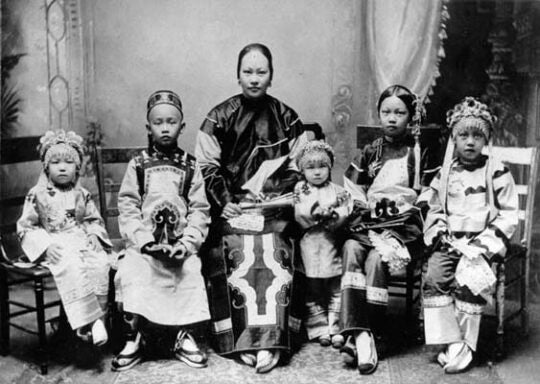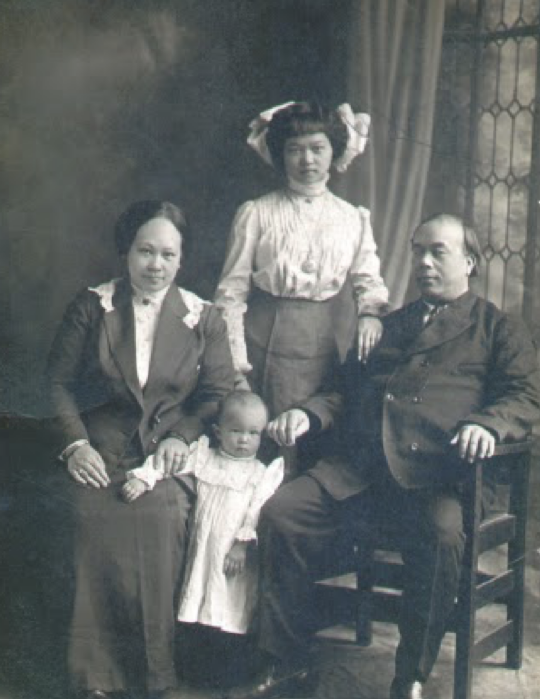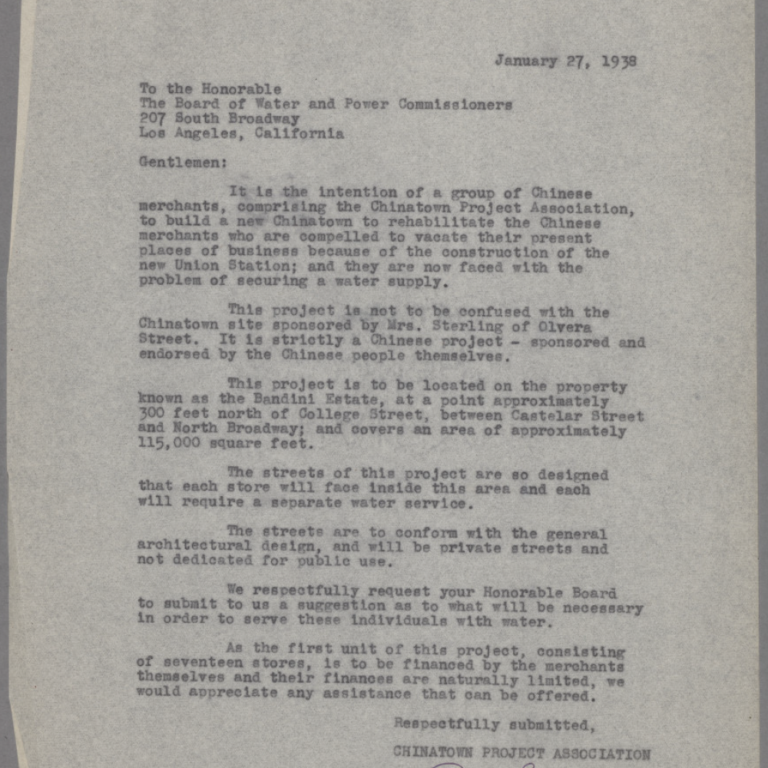
In collaboration with historian Greg Hise and friends at the Chinese Historical Society of Southern California, The Huntington, and USC Cinema, the Chinatown History Project blends historical research with creative website and augmented reality experiences to recover the neighborhood of the original Chinatown of Los Angeles.
In the mid-1930s, the city’s first Chinatown, a vibrant, polyglot neighborhood of several thousand people, was razed to make way for Union Station, the last major metropolitan train station constructed in the United States. From a foundational database research project designed to repopulate this place with the lives of the people who lived and worked there, the project expands outward by inviting audiences and end users to see within and across layers of Southern California space and history.
ICW is grateful for support from California Humanities* and the NEH.
New and Coming Soon
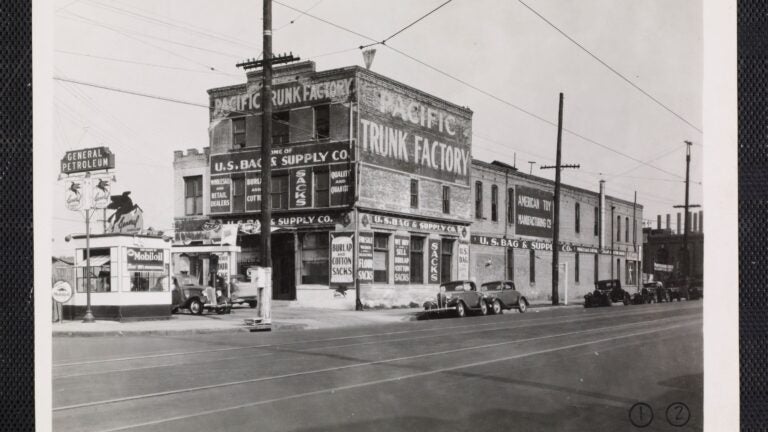
Learn more about the origins of the project
Twenty years ago, The Huntington Library purchased a rare set of 128 photographs of Chinatown prior to destruction, depicting the homes, businesses, and institutions of the neighborhood in rich detail. The photographer, for as yet unknown reasons, documented many of the apartments, boarding houses, stables, restaurants, grocery markets, schools, and other sites of a working-class neighborhood. Within only a few years, all were obliterated to make way for tracks and the station. Many of these photographs were meticulously labeled with addresses and streets. As such, they offer us the opportunity to re-imagine, remember, and commemorate a neighborhood – and its people – nearly a century after demolition and forced departure.
NEH grant to develop AR prototype
The NEH awarded ICW close to $100,000 for the prototype of the multiformat digital project on the history of Los Angeles’s Chinatown. We are grateful for all your support on this work and look forward to next steps with our colleagues in the Cinema School to create the prototype. https://www.neh.gov/news/neh-announces-281-million-204-humanities-projects-nationwide

Construction of Union Station
While well-known in the Chinese American community, this history of displacement is not widely known by broader public or scholarly audiences. Working with a wide and diverse range of primary and secondary sources, the project’s research team is reconstituting the human history and in situ history of Chinatown from approximately 1850 until the 1939 opening of Union Station. The district, bustling nowadays on either side of Alameda Street just north of the 101 Freeway, is deeply and thickly layered with the racial, ethnic, and working-class history of Los Angeles. It is here, on the slight knoll of the Los Angeles Plaza, where Los Angeles began in the late 18th century. It is here where the 1871 anti-Chinese massacre took place. It is here where Chinese, among multiple other nationality groups and communities, carved out a vibrant community of rich diversity close to the administrative and commercial centers of early 20th century Los Angeles.
At the heart of the project’s humanities research is the creation of a database that assists the team in reconstructing the lives of Chinatown residents. With the original collection of The Huntington’s historic photographs as the primary guide, the research illuminates the neighborhood by way of a rich array of social historical data. Census records tie residents to apartments, tenements, houses, workplaces and businesses. Oral histories reveal stories of immigrant journeys from around the world to the now-lost streets of Apablasa, Juan, Napier, Marchessault, and others.
The project advances understandings of race and neighborhood, the Chinese American experience, and Los Angeles history in significant ways, especially by showcasing exciting visualization technologies developed and applied by USC Cinema scholars and students.
(*This project was made possible with support from California Humanities, a non-profit partner of the National Endowment for the Humanities. Visit www.calhum.org. Any views, findings, conclusions, or recommendations expressed herein do not necessarily represent those of California Humanities or the National Endowment for the Humanities.)
The Chinatown History Project focuses on community. One family that bridges Old and New Chinatown is the Soo Hoo Leung family. Their family illustrates the rich family life experienced by residents of old Los Angeles Chinatown. We invite you to learn more about this family through the narrative co-written with CHSSC and photos below.

Soo Hoo Leung, a first generation businessman, opened his mercantile store, Sang Yuen, on the ground floor of a two-story brick building in the 310 block of Apablasa Street in the 1890s. He became a foundational member of Chinatown.
In 1895, Leung married Yee Oie (Annie) from Santa Barbara. Their wedding was described in the Los Angeles Times, “The intended bride came to the Angel City accompanied by one or two attendants, . . . closely veiled, she was taken to her future husband who had never before seen her. The marriage was accomplished and many firecrackers were exploded for the good luck of the young couple. Following the wedding . . . a feast was given at one of the fashionable Chinatown restaurants in their honor. . . The bride is declared to be one of the most beautiful Mongolian women in this part of the country.”
The Soo Hoos lived with their expanding family, very close to the store, on 519 Apablasa Street. Together Leung and Annie had eight children. Leung lost his sight in his early 30’s, but he did not allow this handicap to limit his activities. His granddaughter, Florence Frances, described him as tall; charming and wise; determined; outspoken; strong willed and a very respected member of his community. After the birth of her eighth child, Eleanor, Annie passed away at age 35. Leung was left to raise his children without their mother. In the 1930s, Leung was forced to leave his home on Apablasa Street with the building of Union Station.
Three generations of the Soo Hoo family lived and worked on Apablasa Street. Leung and Annie’s elder son, Peter Soo Hoo, Sr., studied engineering at USC. Peter became the first Chinese American engineer of hired by the L.A. City Department of Water and Power (DWP), where he spent a long career [he died young, in 1945]. As a leader in Old Chinatown, he worked with many to plan and establish New Chinatown. His son Peter Soo Hoo, Jr. served in the U.S. Army in World War II, later followed his father’s footsteps at USC and the DWP.
The family’s ties to Chinatown span generations. Peter Jr.’s son, Jon Soo Hoo, is the official photographer for the Los Angeles Dodgers. Granddaughter (fifth generation Soo Hoo in L.A.) Caitlin Bryant, is a board member for the Chinese Historical Society of Southern California.
The Son Hoo store in the 300 block of Apablasa, The Huntington Library.
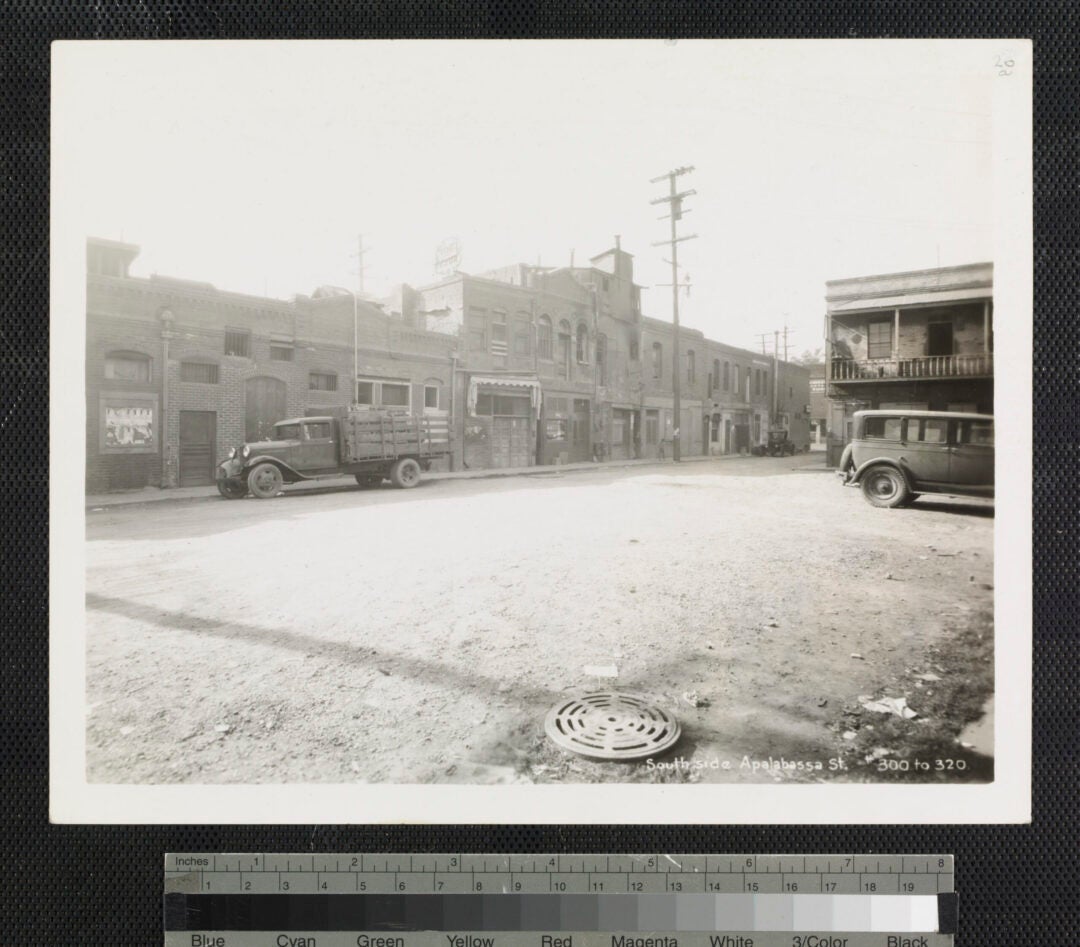
Annie Soo Hoo and children outside home on Apablasa Street, CHSSC
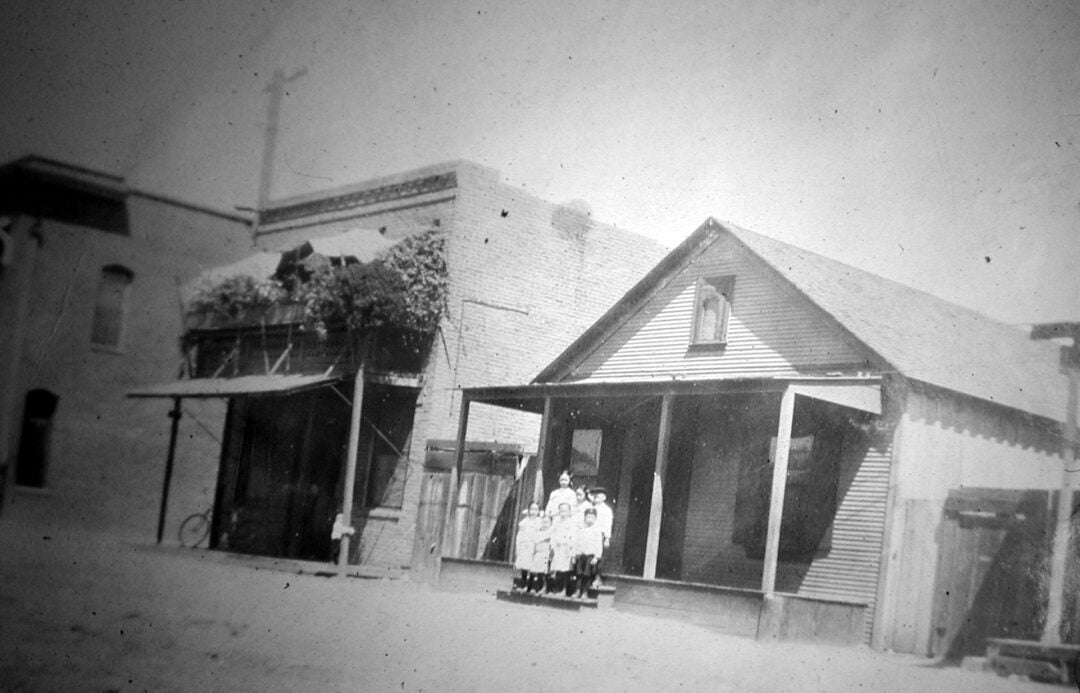
Soo Hoo Leung family in 1920 census
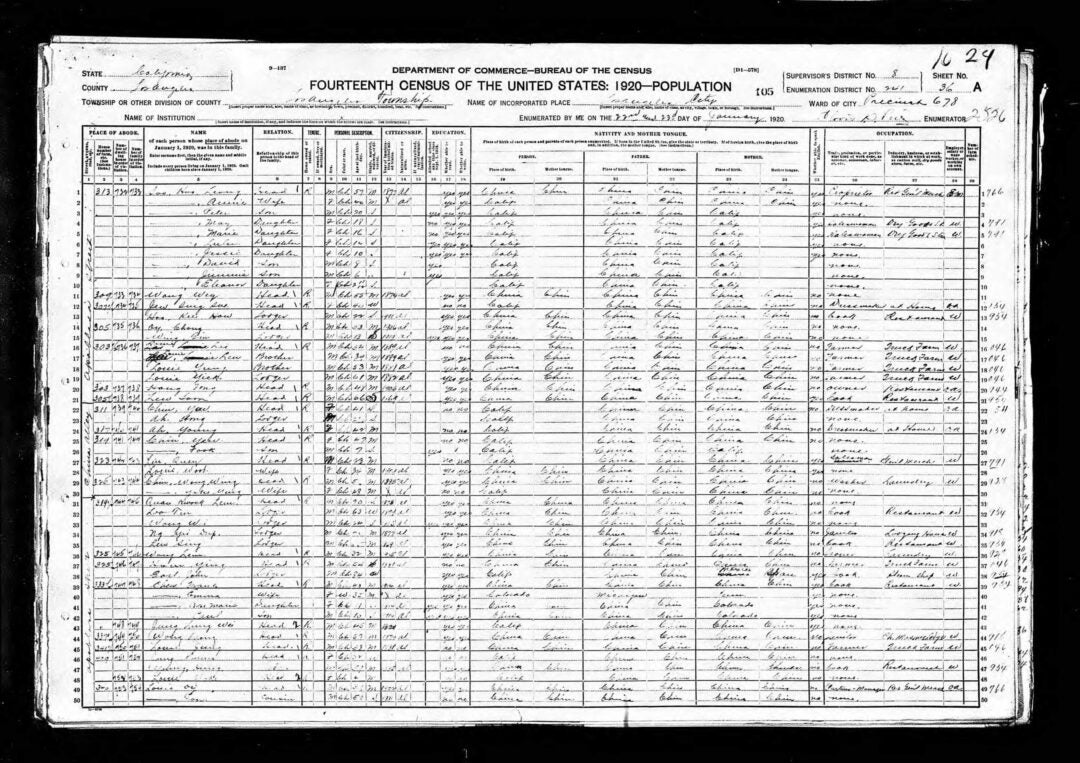
Map of neighborhood including Soo Hoo store from the files of immigration attorney Y.C. Hong, The Huntington Library
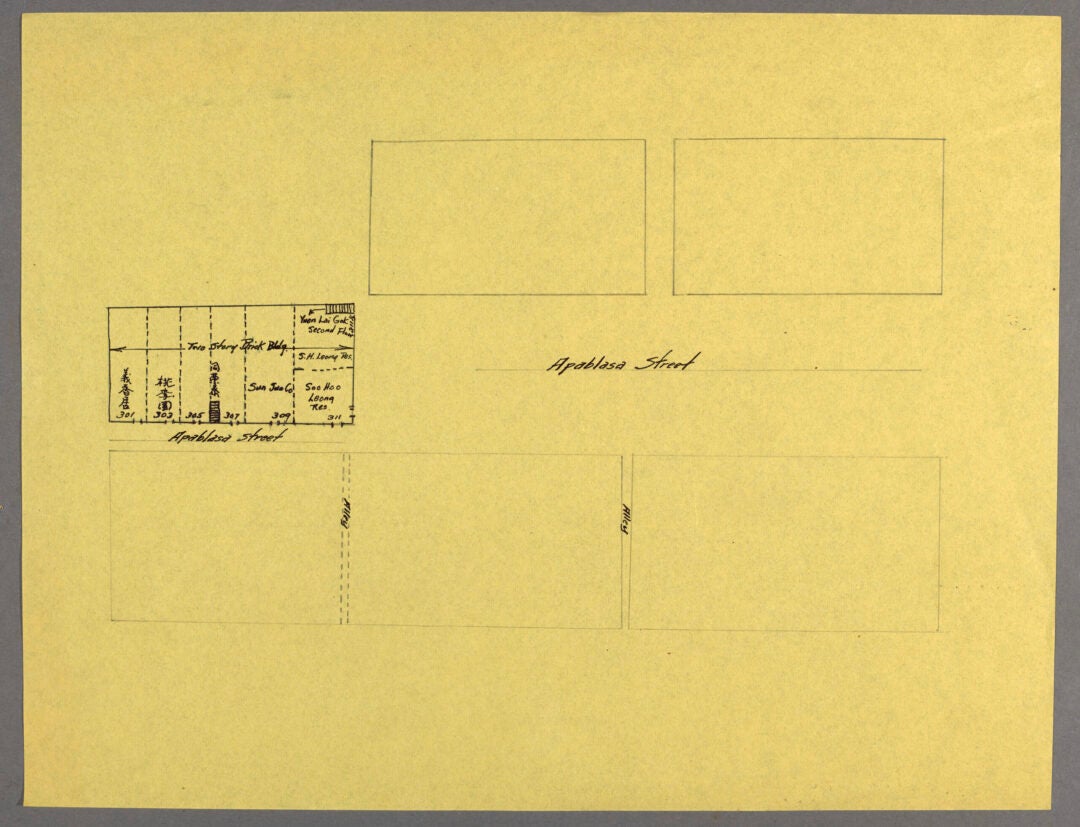
Annie Soo Hoo c. 1908, CHSSC

The Soo Hoo Leung Family, CHSSC
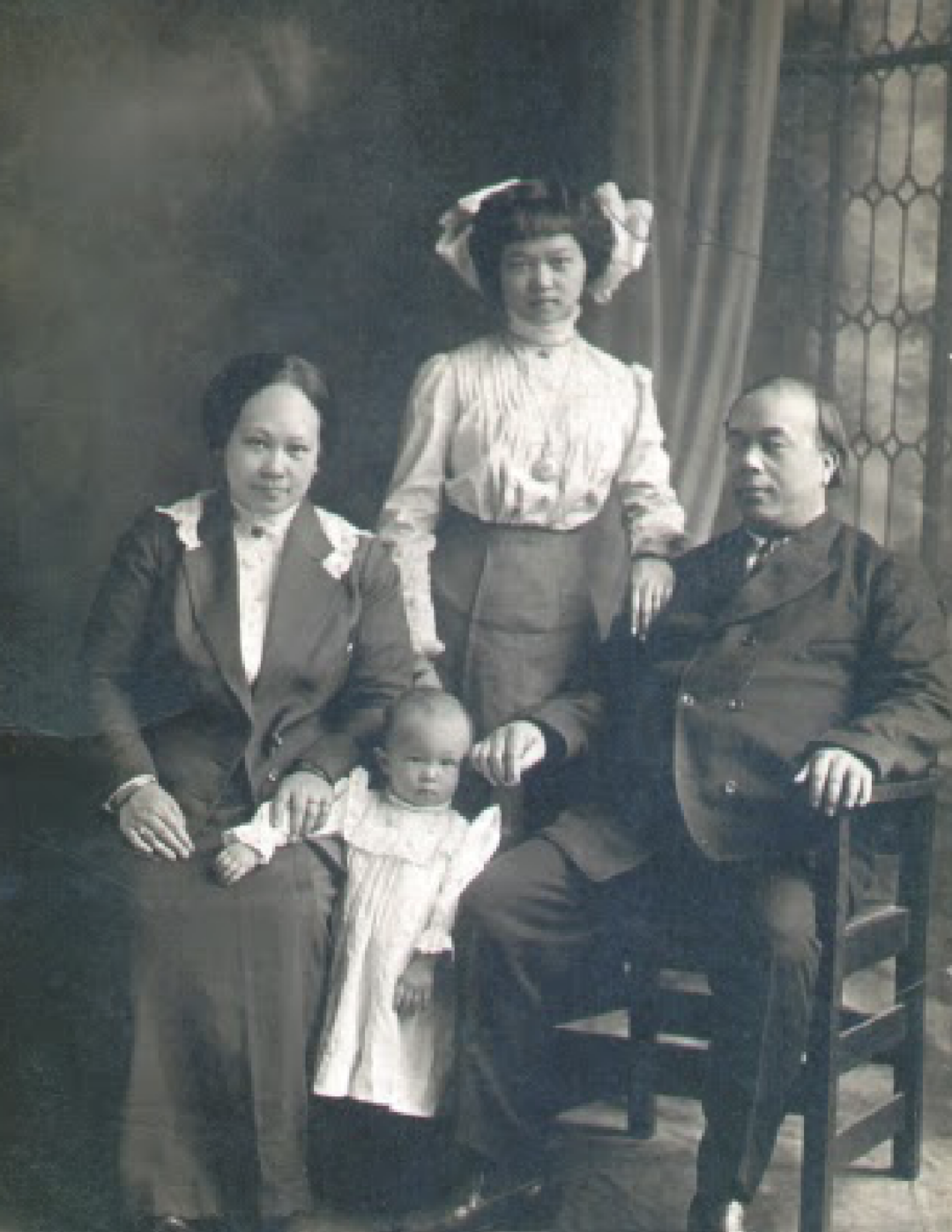
In January 1938, Peter Soo Hoo Sr. wrote the Board of Water and Power Commissioners about the plans for New Chinatown. The Chinatown History Project seeks to reflect the connections between Old and New Chinatown – the labor of those like Mr. Soo Hoo and the family members at work today.
(From the Peter Soo Hoo Collection at The Huntington Library.)
